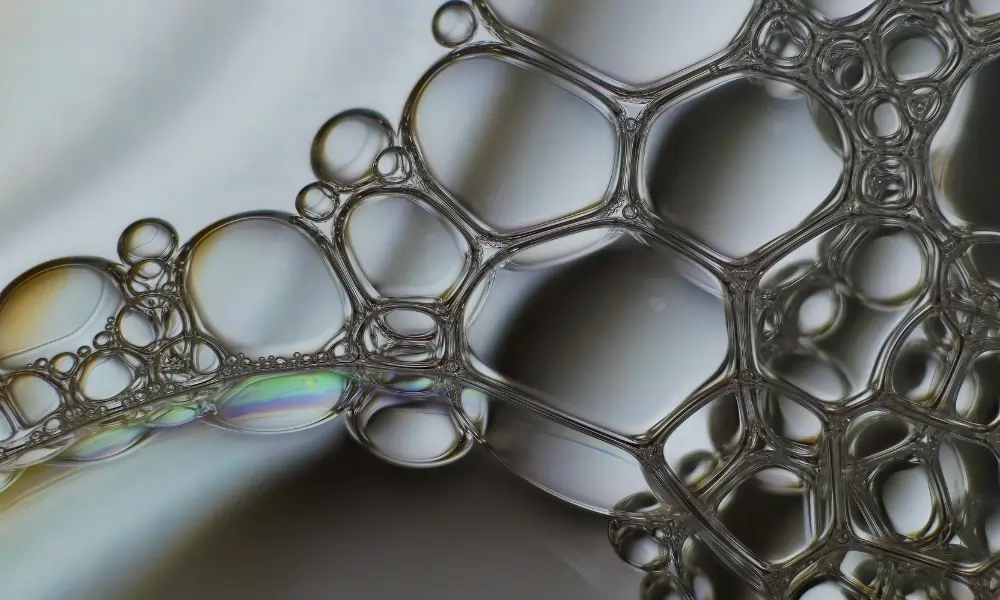Last updated on April 17th, 2025 at 03:11 am
As someone who has always been cautious about the health of hair fibers, it is time to understand the crucial role that lipids, both exogenous and endogenous, play in maintaining healthy hair. These lipids come from various sources like sebaceous glands and hair matrix cells, including free fatty acids, triglycerides, cholesterol, wax esters, and squalene.
However, using shampoos and conditioners containing surfactants can significantly alter the lipid composition of our hair, leading to potential damage. The hair properties can change when these crucial lipids are removed during routine cleansing and shampooing, despite the products not removing all lipids from the surface layers of hair.
The intricate cell membrane complex makes it difficult to determine where surfactants act precisely and their overall effectiveness, which needs to be better developed in terms of research and lacks consensus. More research is needed to explore the penetration pathways of surfactants to limit possible damage and improve the effectiveness of hair care products.
An Overview About Lipids
Lipids are diverse chemical compounds that play crucial roles throughout your body. They are essential in forming cell membranes, which control what enters and exits our cells, and act as structural components crucial for maintaining cell integrity. These organic compounds include fats, waxes, sterols, and fat-soluble vitamins like vitamins A, D, E, and K and phospholipids.
Lipids are not just structural; they are functional too, aiding in storing energy, signaling, and producing hormones. Their nature as fatty or waxy substances that don’t dissolve in water makes them unique. However, maintaining normal levels of certain lipids is vital, as too much can be harmful. This balance is often measured using a lipid panel.
Hair Lipids: An Essential Component in the Hair Shaft
The human hair shaft is a filamentous structure that starts its journey from a hair follicle and is deeply rooted in epidermal origin. The complex composition and function of hair proteins contribute significantly to the mechanical properties, diameter, shape, color, and hair texture.
Biochemical studies have shown that hair lipids serve not only as a barrier against moisture loss but also enhance shine, elasticity, and tensile strength, fortifying the hair against environmental and chemical damage.
These lipids, varying in chemical type from free fatty acids to cholesterol and wax esters, are integrated into the hair in both free and bound forms, which are crucial for their protective roles. Surfactants in shampoos and conditioners, however, often challenge this natural defense by removing these vital lipids during routine shampooing, leading to lipid loss and increased friction on the cuticle, resulting in a hydrophilic surface.
The cell membrane complex (CMC), sitting between cuticular and cortical cells, helps maintain the lipid barrier, but its intricate structure complicates the interpretation of surfactant effects.
Role of Lipids in Hair Integrity
Lipids play a fundamental role in maintaining the integrity and health of hair fibres, significantly influencing texture, shine, and overall appearance. The hair lipid content—comprising bound fatty acids, cholesterol (CH), ceramides (CER), and other essential molecules—provides a protective barrier that enhances tensile strength and reduces breakage.
From the root to the tip of the hair, lipids ensure the hair surface remains smooth and resilient against environmental stress and routine grooming.Surfactants in hair care products, while beneficial for cleaning, can disrupt this lipid balance, leading to a loss of hair gloss and an increase in surface friction.
This is often seen as hair becomes dry, tangled, and untidy. External lipid extraction by surfactants reduces the hydrophobicity of the hair, which can disturb the refractive index and diminish the penetrating and scattered light that contributes to hair’s natural luster.
Additionally, internal lipid extraction may alter the internal fiber, making it more polar and unexpectedly increasing the water content, which can further weaken the hair, making it brittle and stiff. This cumulative impact underscores the crucial need for balanced hair care formulations that minimize lipid loss while maintaining cleanliness.
Surfactant: An Essential Ingredient of Hair Cleaning Products
Surfactants are powerful molecular compounds used as cleansing agents in shampoos and conditioning agents in conditioners. On wash day, these short, negatively-charged molecules work magic by combining water from the shower with oil and dirt that build up in your hair.
This mixture helps detach unwanted residues from the hair shaft and leave your hair clean. The negative charge on cleansing surfactants even gives your hair a lift at the hair cuticle, making it look bigger and have more volume after washing.
Surfactant Cause Lipid Destruction
Surfactants, commonly found in shampoos and conditioners, are designed to cleanse the hair and scalp of dirt and oils but can also cause unintended harm by stripping away essential lipids. The structure of hair—notably when it’s damaged or extremely porous—makes it particularly vulnerable to water absorption, which causes swelling of the hair shaft and can exacerbate damage from grooming habits and environmental exposure.
This swelling increases the breakage risk, leading to progressive degeneration from the root to the tip. The lipids in hair, which should protect against weathering and daily wear and tear, can be significantly depleted by surfactants. These ingredients, while effective at removing unwanted residues, operate by weakening the physicochemical bonding forces that hold lipids and impurities together.
This interaction often leads to the removal of up to 70–90% of total lipids with repeated shampooing, as demonstrated in studies. The loss of these protective lipids results in hair that appears dry, lacks shine, and becomes difficult to comb.
Despite the thorough cleansing action, the lipids’ destruction renders the hair more susceptible to future damage, indicating a need for formulations that can cleanse while preserving hair’s natural defenses.
Conditioner Neutralizes the Negative Effects of Shampooing
Conditioners play a crucial role in hair care by neutralizing the negative electrical charge of hair fibre caused by shampooing. By adding positive charges and lubricating the cuticle, they reduce the hydrophilicity of the fibre, which helps minimize frizz and improve combability.
These products are enriched with anti-static and lubricating substances such as polymers, oils, waxes, and hydrolyzed amino acids, making them essential for managing friction and making hair easier to detangle.
When used after shampoo, which often contains anionic surfactants, conditioners with cationic ingredients form a cationic–anionic complex on the hair surface, creating a neutral hydrophobic layer. This layer acts as a protective layer that prevents further damage from environmental elements and grooming practices.
Particularly for bleached and chemically treated hair, which is more porous and has a higher affinity for these conditioning ingredients, the application of a conditioner can make a significant difference.
It adsorbs to the hair surface and is vital in maintaining the integrity of the hair, as evidenced by X-ray diffraction studies showing no changes in the internal lipid composition of the cell membrane complex before and after treatment. This underscores the limited, yet targeted, effects of conditioners, making them indispensable in counteracting the harshness of shampoos.
Conclusion
Surfactants in shampoos can remove lipids from hair, which are influenced by surfactant structure, concentration, agitation, temperature, time, and other factors. Scientists believe that during routine washing, these surfactants can tremendously affect lipid loss, which strongly correlates with the lipids’ relative hydrophobicity and water solubility.
However, lipid-based hair care products like conditioners, oils, serums, and masks containing natural plant oils, fats, waxes, and phospholipids can restore these lost lipids and significantly improve hair surface texture and shine.

Dive into the world of curls with Farah, a celebrated curly hair expert whose passion and expertise have transformed her into a beacon for those seeking to embrace their natural hair texture. With a vibrant career spanning over a decade, Farah has dedicated herself to the science and art of curly hair, making her an authoritative voice in this niche. Her deep understanding of curly hair’s unique needs and challenges allows her to craft personalized care routines and styles that not only enhance the natural beauty of curls but also promote hair health.

